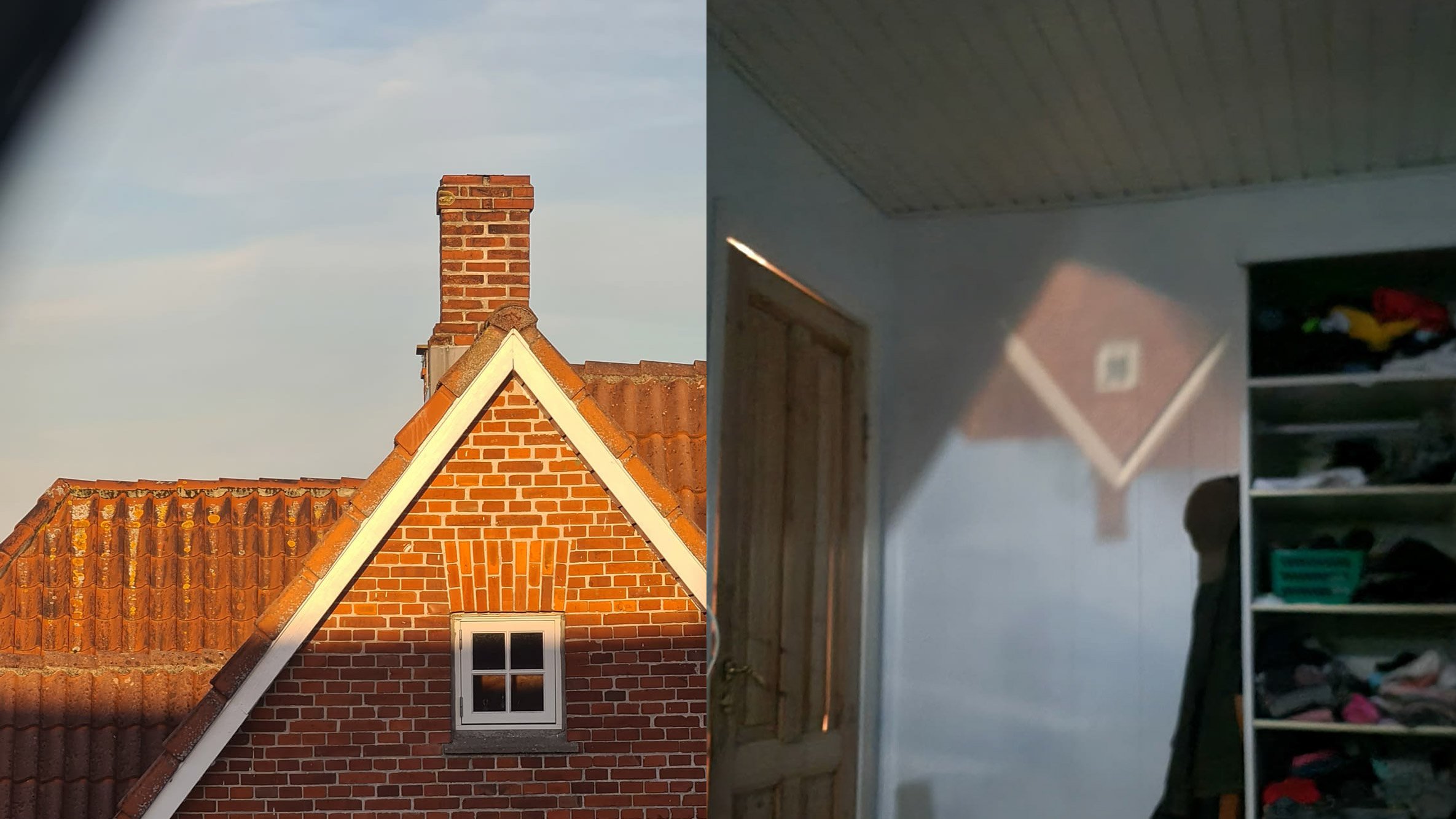

It doesn’t take much to create a pinhole camera. You can pretty much make one out of anything that is light proof, from teddy bears to oranges, people have been experimenting with this since the birth of photography. But how many people have unwittingly created a pinhole camera out of their house?
Danish artist Stefan Lægaard managed to create this phenomenon quite by accident, in his daughter’s bedroom. Of course, this is actually a Camera Obscura rather than a pinhole camera. However, the same process applies, simply with the projection of the image onto a wall and without using photosensitive paper.
“I was tucking my 3-year-old daughter [into bed], and then she asked “Why is there a picture book on the wall?”” Stefan recounts the moment when he first saw the upside-down projection of his opposite neighbour’s house on her bedroom wall.
The image projected on the wall
The neighbour’s house opposite
“At first, I just thought it was a weird shadow, but then the image became clearer and clearer, and it was obvious that it was the neighbour’s house reversed,” he adds. “I had never seen anything like it, and though I had heard about the camera obscura from school and movies, I’d never expected to see it on my own wall.”
How did it happen?
Stefan told his daughter that he wasn’t sure how it had happened, but he was determined to give her an answer by the following day. So, he posted to a Facebook group to ask if anyone else knew.
Stefan’s photos clearly show the projection. And when you look at the accompanying images of his ‘set up’ with the mostly blacked-out window, you understand exactly how this occurred.
Stefan’s diagram of the positions of the houses and the sun
The window at the top of the house is already small. Add to that the blackout blind which has slipped to reveal a very small opening, and you effectively have a pin-hole camera. The sunshine was reflecting off the neighbour’s house opposite back into Stefan’s window with the small opening, and was then projected onto the wall, albeit upside down.
The partially covered window, creating a pin-hole effect
Others commented that they, too, had seen a similar effect, also with small triangular-shaped attic windows. “This camera obscura effect happens in our loo (bathroom) sometimes through the small fan, but with added fan-blade-rotating shadows. Truly fascinating when you’re sitting on the loo,” added one.
What is a Camera Obscura?
A camera obscura is essentially the precursor to the modern camera. In fact, the clue is in the name, which means “dark room” in Latin. To create a camera obscure you need a dark room with a small opening for the light. Light from outside passes through this small hole and projects an inverted image onto the opposite wall inside the dark chamber.
Optics: the principle of the camera obscura. Engraving 1752. Credit: Wellcome Library, London. Creative Commons Attribution licence CC BY 4.0
The Camera Obscura has been around for a long time and was even mentioned by Aristotle. Later, Renaissance painters such as Leonardo Da Vinci used the phenomenon to aid their paintings, and scientists used the technique to view solar eclipses safely.
It wasn’t until the end of the 18th century, however, that people began to experiment with capturing the image onto paper, essentially turning the camera obscura into a pinhole camera. However, it wasn’t until a way of fixing the image onto the light-sensitive paper was discovered, that the photograph as we understand it today was born.
Hopefully, now Stefan’s daughter has all the information she needs to understand why she has a “storybook picture” projected onto her wall. It’s a fascinating phenomenon that stretches back to before the dawn of photography.
You can see more of Stefan’s artwork on his Instagram page.






